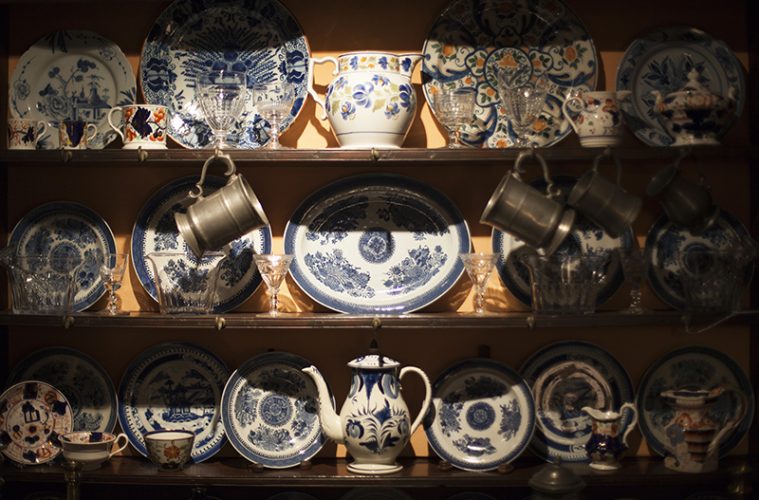Some people fixate on the stock market, and some people can talk for hours about the Red Sox. William Ralph obsesses over antiques. A conversation with him wraps history with craftsmanship and the personal stories behind each item that has passed through his hands.
“I’m sure nobody thinks about antiques as much as I do,” says Ralph, who owns William Ralph Fine Antiques in Rowley and has spent 35 years in the antiques business. “There are hundreds of stories about the things I have.”
And just as many stories about the things he no longer has, such as a painting of Thomas Chew, a purser in the United States Navy, that now hangs in a place of honor at the USS Constitution Museum. Ralph acquired the painting in 2001 and developed a fondness for it, hanging it in his home rather than displaying it for sale.“It really just seemed to fit in my house,” he says. Over the years, Ralph did considerable research about the purser, who is credited with recording—during the War of 1812—Captain James Lawrence’s immortal words, “Don’t give up the ship,” before he died of a cannon wound aboard the ill-fated Chesapeake.
Serendipitously, after keeping the painting on the wall in his own home for more than a decade, he decided it would be a good fit for the Endicott house at Glen Magna Farms in Danvers when he was invited to decorate the Peabody parlor for the property’s Holiday Show House benefit.
“The room needed great things on the wall,” Ralph says. “I thought people would be particularly interested in this painting, as it was of a real person, and the battle [where the Chesapeake was captured] was fought near Salem and Marblehead Harbors.”
It caught the interest of one person especially—a representative of the USS Constitution Museum. The museum has an extensive collection of artifacts from Chew, but no pictures of him. In fact, the museum had even commissioned an artist to try to craft a likeness of him—one that was scrapped when the real deal was found.
Ralph sold the portrait to the museum at cost, and made one more exciting discovery while delivering the painting. A stickpin that Chew wears in the portrait is among the artifacts possessed by the naval museum. “It wasn’t a simple transaction,” Ralph says. “It was destiny. It was a very exciting day for me.”
It’s clear in chatting with Ralph that it’s the stories—not the money—that drive his passion. Ralph specializes in items crafted before 1830, prior to the Industrial Age, which produced machine-made goods. His small shop in Rowley, open by appointment or by chance, and sales made through MacDougall-Gionet Antiques & Associates in Wells, Maine, feature early American furniture, pewter, brass, and paintings, among other artifacts.
Ralph says jewelry and other personal items have grown in popularity in recent years, though he is the first to admit that the antiques business has not seen the same recovery as other industries.
“The days of buying an antique for an investment are pretty much over,” Ralph says, noting that antiques are very muchlike stocks—prices go up and down over time. So a mahogany bureau that may have been worth $12,000 or more 10 years ago may only be worth between $3,500 and $4,500 today.
Also like the stock market, it is important to do research and really understand what you have—something that few peo- ple have time for, Ralph says, explaining that he hears time and again from people whose children aren’t interested in family heirlooms.
“The parents or grandparents spent their lives caring for these things and hoping they would be passed down to someone in the family. When the time comes, they are disappointed that nobody wants them,” he says.
Ralph would argue that it’s not so much that they don’t care about antiques, but rather that life these days is much more transient than it was for previous generations. “It’s not that people don’t want these things. It’s that they aren’t settled down,” he says. “Any time you have something of value that requires care and special attention, it’s hard to think of taking it on when you’re not sure where you’re going to be.”
While Ralph understands the concern, he is the first to say that antiques should be used, not cosseted away. “These items were built to be in houses without central heat and all kinds of moisture problems. They are built to last.”
William Ralph Fine Antiques, 55 Warehouse Ln., Rowley

